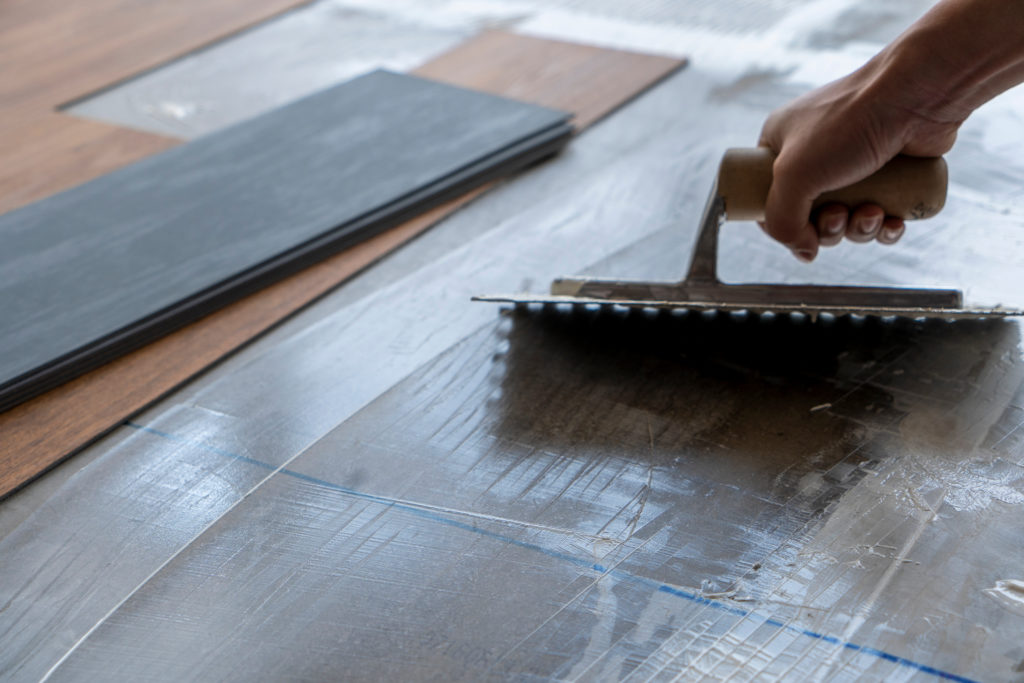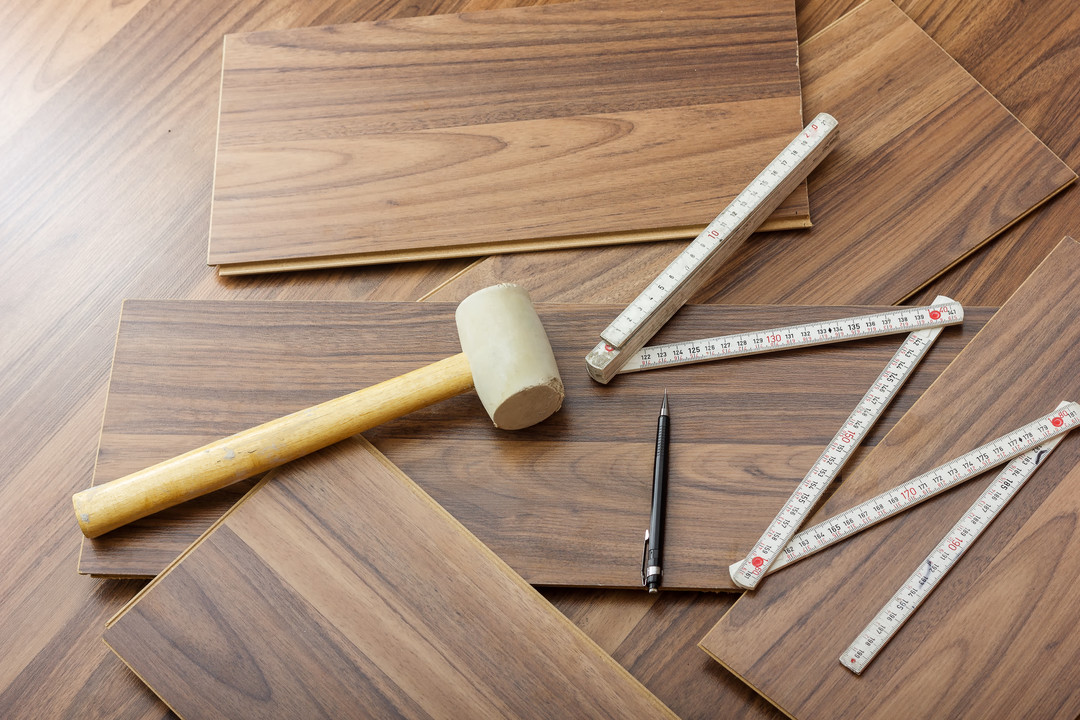Luxury Vinyl Planking (LVP) is all the rage in flooring right now. Made from multiple layers of textured vinyl, this hard-plank material offers a sleek minimalist look. The best part? It resembles hardwood without the high maintenance. Check out these two formats of flooring that you can choose from. Take a closer look at the dissimilarity between glue down and floating vinyl plank flooring, so you can make a well-informed choice for your upcoming remodeling project.
Note:
Some contents in this article may contain external links. For more information, please refer to our
Privacy Policy
LVP Glue Down Technique

Glue-down LVP is available in two variations: hard-set and pressure-sensitive. With hard-set LVP, you need to apply adhesive on the floor before placing the planks for a fast installation. It’s a great choice when renovating a kitchen with white cabinets and new flooring, as trimmed hard-set LVP can give the area a fresh look.
On the other hand, pressure-sensitive LVP comes with sticky backsides on each plank. Just peel off the paper backing and stick it onto a prepared subfloor.
LVP (Floating) Technique
A floating floor is not stuck to the subfloor. Instead, it floats above the subfloor once it’s installed. LVP planks are connected by clicking them together to create the floor. Installers use special tools to snap the planks into place and trim the edges if necessary.
Sometimes an underlayment is used under the planks, but floating floors can be added to the subfloor with minimal preparation.
Considering The Subfloor
It’s important to assess the subfloor carefully when deciding between glue-down and floating. For glue-down, make sure to level the subfloor first to avoid issues like peeling or cracking. On the other hand, floating can handle minor unevenness and hide imperfections. Before starting any kitchen remodeling project, take a good look at the condition of the subfloor.
Material Thickness
Think about how much foot traffic the area gets before choosing a floor type. Glue-down LVP is thin and flexible when installed on the subfloor, while floating LVP can be up to six millimeters thick. Thicker floors are better for high-traffic areas.
Replacing Planks
Floors can get damaged at any time. Removing glued-down LVP sections is quite easy. However, problems arise when a floating floor is damaged in the center of the room. The planks are tightly connected, so you may need to remove a larger section than just the damaged area. Considering this is important when thinking about foot traffic and the longevity of the floor.
Factoring Cost
Floating LVP tends to be pricier than glue down due to its material thickness. Yet, opting for the floating option often means a more extended warranty on the materials, which can be worth the extra cost.
If your subfloor needs leveling, the initial savings of glue-down LVP might disappear. Consider the expenses of shimming or leveling the subfloor with concrete before you can start installing the materials.
Bottom Line LVP or Gluedown?
The ideal material (floating or glue down) for your specific needs depends on how you plan to use it and what you prefer. For instance, some individuals appreciate the hollow sound produced by a floating floor when they step on it, while others favor the solid acoustics of a floor securely fastened to the subfloor. The most effective way to make a decision is to walk on both types of floors and assess how they match your home’s overall look. A modern floating LVP floor, for instance, can enhance contemporary styles like skyline cabinets.
At AZ Floor Solutions, we provide top-quality self-levelers that will rejuvenate your floor, making it appear brand new. Our products are user-friendly and boast long-lasting durability. For further details, please don’t hesitate to contact us at 623-336-1707 or via email at co*****@**************ns.com.
Share This Article

